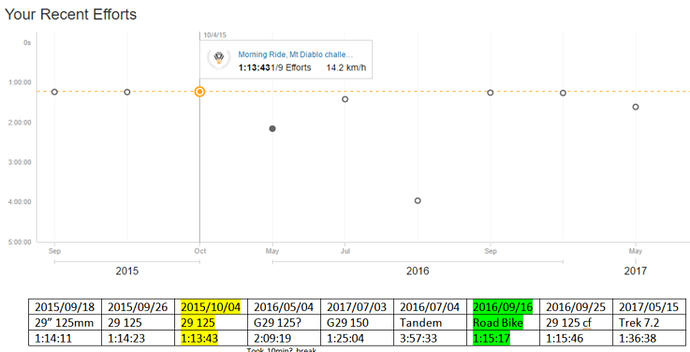There have been many attempts on this forum to model the unicycle in the simplest of modes, and all have failed, because a model is but a gross approximation of a very complex system. In this case, the system is a bimodal double pendulum, a system that has a very strong sensitivity to initial conditions.
Whereas some systems can be approximated with a mathematical model, this can only be done when all first-order effects are well-understood, and higher-order effects add to the approximation at lower orders of magnitude. A classic example is ballistics calculation. We can use Newton’s equations and predict with reasonable accuracy where a projectile will land, based only on initial conditions, without accounting for the effects of drag, wobble, and such. These factors don’t change the calculation but for a few percent.
With our double pendulum, the first-order effects are strongly sensitive to the conditions in which the inputs are applied: pressure on the pedal when the unicycle is in just the right orientation will result in a very efficient translation to forward motion. Pressure on the pedal when the unicycle is off-balance will result in a very embarrassing face-plant for the pilot. There is simply no way to model all the dynamics of a rider pedaling up a hill as this is a chaotic system: there is no repeatable behavior a unicycle-rider system can exhibit, even if the rider’s inputs are perfectly replicated millions of times.
Reading through this thread, I feel I’m reading the text of an author that’s studied a subject just long enough to know how to use its parlance in conversation, but not long enough to understand the limits of his study. Then, said author is using his parlance to expound on an activity he’s only seen on YouTube through a haze of insufflated model glue and malt liquor, pounding his theories out on a nicotine-stained keyboard whilst occasionally kicking the dog beneath his desk. Failing to get a reaction from the dog, our author continues to beat his keyboard at an increasingly frantic rhythm, straining to milk this forum for the slightest shred of recognition of his “genius”, yet failing to even see the very text he’s producing.
Chaos theory isn’t covered in Physics 101, and there’s no CRC Handbook of Unicycle Tables, so unless you just got your PhD, you’re not really going to get anywhere in this thread. Please, for the love of Peck, just go ride your grundle up a mountain, then get back to us about how much ball sweat you wrung out of your riding panties. We only accept empricial evidence here.
